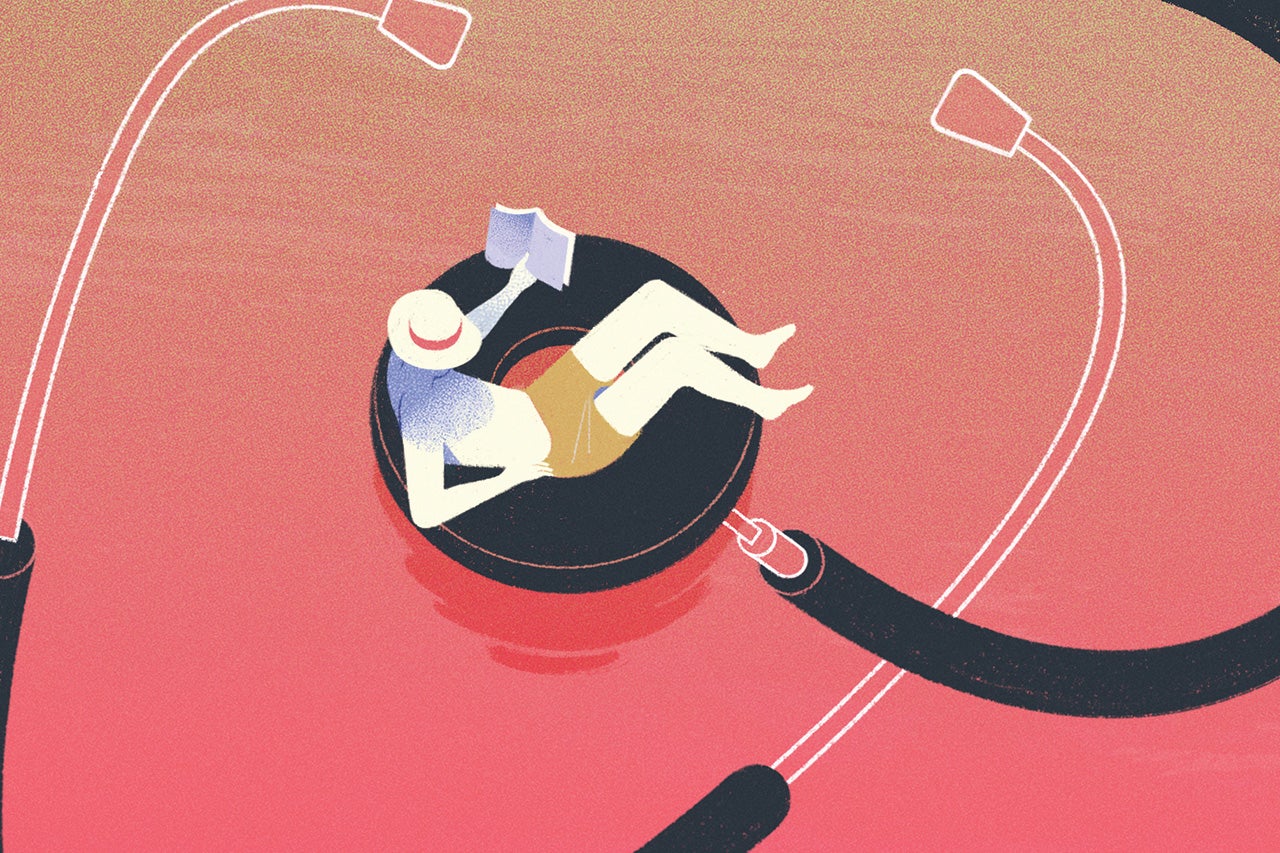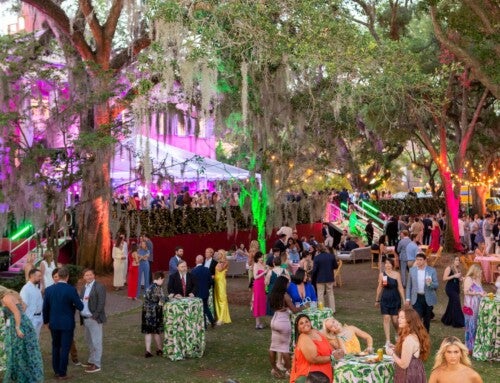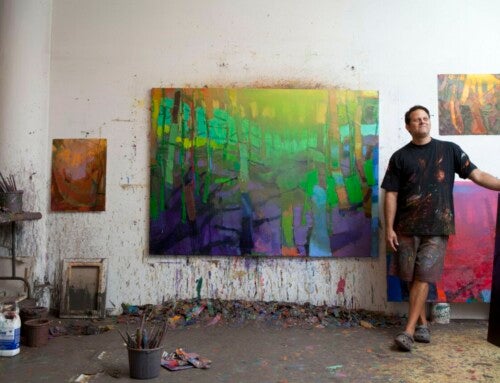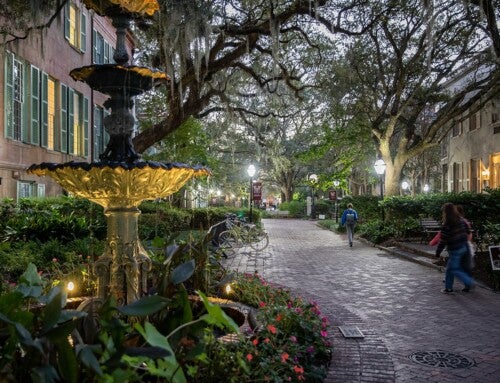This alumnus has been Hilton Head Island’s only oncologist for 25 years, but it’s hardly been a vacation, as few oncologists in the country have seen more patients than he has.
By Gary W. Thomas ’83
I was Just finishing up a fellowship in hematology and oncology at the Comprehensive Cancer Center at Wake Forest University in 1993 when I came across an intriguing ad in the Journal of Clinical Oncology. It showed a doctor wearing a white lab coat over a bathing suit while lying on a lounge chair on the beach reading a medical textbook. Hilton Head Hospital was looking for an oncologist. Although I had grown up in Charleston, I had never been to Hilton Head and decided to look into it.
A few weeks later, on the backcountry road from Charleston to Hilton Head, I started to have second thoughts because I had been on the road for an hour and had not seen another car – and I still had another hour to go! I pulled into this lone gas station to find a pay phone and called my dad, a very sensible man who graduated from the College in 1943.
“This is the middle of nowhere,” I told him. “I don’t think I want to go through with this interview.”
“You’ve given your word that you’d be there,” he said. “If you don’t like what you see, you can always turn them down.”
There still weren’t many signs of life as I got closer to the island. It wasn’t until I crossed the bridge and saw how beautiful it was with the Harbour Town Lighthouse off to right that I had any thought of considering it.
Hilton Head had a population of about 30,000 people and no oncologist. Residents had to go to Savannah or Charleston just to get basic care. It was very exciting to think of building my own practice from the ground up, but it was also very scary because I didn’t know the first thing about running a business, and I’d be completely on my own. It would have been a lot easier to join an established practice, but I was up for the challenge and accepted the offer after the hospital agreed to help me set up my office with a nurse and an assistant. I still have the same assistant, Saundra Punzel, 25 years later.
I was 31 when I arrived in Hilton Head, but I looked 21. People called me Doogie Howser [the titular character in the early ’90s ABC series about a medical prodigy]. It was trial by fire. I had six patients my first day and still remember each and every one, especially my first patient. She was 29 years old, five months pregnant and she had one of the worst breast cancers I’ve ever seen to this day. My first patient! The idea of giving chemotherapy to a pregnant woman terrified me, so I called one of my professors at Wake, Dr. Hyman Muss, a breast cancer genius.
“Oh, it’s Gary Thomas,” I overheard the fellow who answered the phone say to Dr. Muss. “He’s already calling back. He doesn’t know what to do with his first patient.”
One of the biggest challenges of being a doctor in a small town is there aren’t other doctors to collaborate with for other opinions. You’re totally reliant on the quality of the local pathology and radiology. I made sure we sent out a lot of second-opinion pathologies. Even today, with immunotherapy, we really need a multidisciplinary team, but we don’t have an endocrinologist or an infectious disease doctor at Hilton Head Hospital, so I’ve sort of become a jack of all trades.
There are only about 10,000 active oncologists in the country, so recruiting a partner has been difficult: If they’re not into golf, tennis, the beach or boating, there’s not a lot to do here. Most of them want a big city with wine bars and a lot of doctors to cover for them. Younger doctors care more about a healthy work-life balance – and that’s good, because in the old days, it was hell on earth and counterproductive. I might have lived in a resort, but I didn’t have a vacation for the first five years I was here. It was hard to even leave the island to visit my family in Charleston because I could be called at any moment to deal with an emergency. There was very little, if any, lounging on a beach chair, that’s for sure.
“In the old days, I’d see four or five patients of mine every week in the obituary section of The Island Packet. Now, it’s about one or two a month.”
I’ve had to come to rely on nurse practitioners. They have really allowed doctors like me to function at a higher level and provide more care. I was a little bit skeptical at first, but they’re a big help, especially with symptom management, education and mentoring patients and their families as they go through the death and dying process, which is a huge part of what I do. That was a very difficult thing for me to deal with in the beginning because so many of my patients would die. It was very depressing. I wasn’t sure I picked the right field. I remember calling one of my best friends, Dr. Rahul Mehra ’83, and telling him I didn’t know if I could keep going like this. I was taking every death very personally.
“Are you doing everything you can to possibly help them?” he asked me, and I said I was. “Then that’s all you can do. You cannot feel like you’ve let the patients down. If they have Stage IV disease, the science is only so good now. You’re doing a great service even if they don’t make it.”
Today, I still give the same level of compassionate care, but when things don’t work out, I don’t personally feel responsible like I did when I was a young doctor. Fortunately, survival rates have improved dramatically. In the old days, I’d see four or five patients of mine every week in the obituary section of The Island Packet. Now, it’s about one or two a month.
If you had metastatic lung cancer in 1993, you were going to be dead in six months. That was just a fact. I have one patient now who has had metastatic lung cancer for seven years, and all she does is take a targeted pill every day. We now know what drives lung cancer to grow. It’s just amazing. Three years ago, I had another patient who had Stage IV melanoma in the liver and was actually in hospice care when I called him.
“We have this new immunotherapy treatment I want you to try,” I told him.
“Gary,” he said, “I’m 75; I’ve lived a long life. My wife and I have come to grips with it.”
“Put your wife on the phone,” I said.
He tried it, and his cancer went into remission after three months. He wound up developing a rare side effect and had to stop the treatment, but even then, it’s never come back. He’s in full remission and just won Fittest Man of the Year at Sun City for 75- to 80-year-olds. It’s so gratifying to see these kinds of things.
Sometimes I look back and wonder how my life would have been had I moved to Charlotte or Atlanta and had been in an academic medical center and how exciting that would have been, doing clinical research and presenting papers, but I’m glad I chose the path that I did. It’s been so fulfilling and rewarding. It was quite an honor when my peers elected me to be the president of the South Carolina Oncology State Society in 2015. There probably aren’t too many oncologists in the country who have taken care of more patients than I have. I’ve seen tens of thousands of patients over my 25 years here. I don’t look like Doogie Howser anymore, that’s for sure.
People ask me if I’m getting ready to retire, but I couldn’t possibly retire. It’s just getting so exciting now. The best is yet to come in oncology. We’ve only scratched the surface. I truly believe that we’re curing people now with some of these immunotherapies that would have been a pipe dream even a few years ago. I think I have another 10 years in me at least, but I would like to play a little more golf now and then.
– Dr. Gary Thomas ’83 was just awarded the Pre-Medical Society’s Outstanding Service Award in Medicine at the Alumni Awards Gala in November. In 2011, he started the J. Gorman ’43 and Gladys Thomas Memorial Alumni Scholarship for students planning a career in medicine.
Illustration by Chiara Ghigliazza




